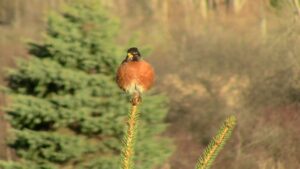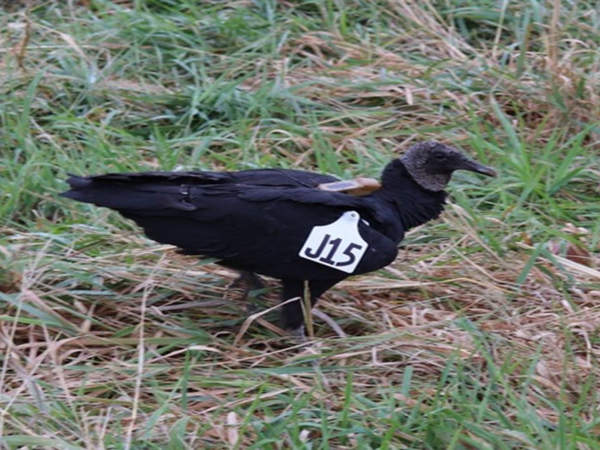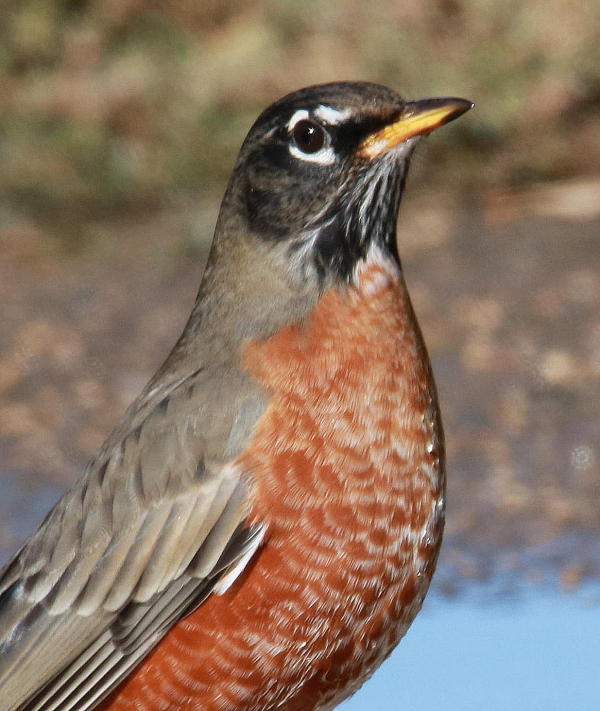Robins Can Tough It Out
By Glen Wunderlich
Charter Member Professional Outdoor Media Association (POMA)
The sights and sounds of spring are in the air. Even though we’re still receiving weekly doses of snow, warmer weather is on the horizon. My garlic plants are pointing toward the sky, turkey vultures are back from their winter vacations and the wild turkeys are making appearances in their nesting grounds. Plus, everyone’s favorite harbingers of spring – robins – are back in the neighborhood. However, if the robins never migrated, are they really back?
The American Robin is Michigan’s state bird and is tough enough to survive the chilling cold winds and snow Mother Nature dishes out, but many of them desert us when the going gets cruel.

American Robin Atop Spruce Tree
I’ve seen them wintering in southern Arizona, where they congregate in the thousands – a sight to behold. Similar to Canada geese, not all robins migrate, however, which begs the question: How is it decided who goes South and who guts it out? There’s always one bird out front but who chose the lead navigator?
Apart from the inner workings of bird brains, we know some birds remain in their breeding territory yearlong, because we have occasion to notice them. In fact, this winter I’ve seen and heard robins sporadically and thinking to myself they’ve made the fatal error of remaining in Michigan. Although the mortality rate of robins is estimated at some 80 percent, it’s not necessarily the cold that finishes them off; food is the underlying factor.
Winter robin abundance is most influenced by two factors: snow cover and food availability. In comparing robin abundance to snow cover, the Cornell’s Lab of Ornithology reports that areas with less than five inches of snow cover typically have lots of robins, while areas with more than five inches of snow cover have fewer robins. Heavier snow cover means colder temperatures and food that’s more difficult to find, so robins move south to more favorable conditions.
Furthermore, if food is abundant, robins can thrive in surprisingly cold temperatures if coupled with minimal snowfall. Fruit-bearing trees and shrubs such as cherries and grapes sustain robins during the winter months. Earthworms and other invertebrates are warm weather fare. Being dietary opportunists, robins remain where food is abundant until supplies are exhausted. Then they move on.
One reason robins linger farther north today compared to 50 years ago – especially during mild winters – is the popularity of ornamental fruit trees in urban and suburban areas. We may plant crab apples, hollies, and mountain ashes for their visual appeal, but robins value their fruits. Our horticultural habits have helped create a winter haven for robins.
Knowing this, I scattered some mixed fruit onto the bare ground including raisins, strawberries, and cherries, when I noticed a flock of robins in a dwarf Sir Lancelot crabapple tree after the pea-sized fruit. See video here. That fruit I bought for them is still on the ground! It seems that if it’s not on the vine, they don’t want it. Similarly, they won’t hit the suet cakes hanging from the limbs, either, but will gobble up these energy bits on the ground. You won’t find robins at typical birdseed feeders, either, because they are not seed eaters.
Elizabeth Howard, Founder and Director of Journey North’s American Robin project is tracking robin movements across North America. She pointed out that robins, though they are considered migratory, don’t follow the typical north to south and back migration pattern we tend to associate with other migratory birds.
“Sometimes you see them and it’s so cold you think, ‘My goodness they’ll all die.’” Howard says. “It’s amazing, the way they survive winter is they fluff their feathers and get really big. Their internal temperature is 104° F and yet they can be in areas below freezing. That’s how well their feathers insulate them; there can even be a 100-degree difference just through those layers of feathers.”
If you want to observe robins in winter, try putting out water for them. They can survive on their own by eating snow, but birds always welcome a source of unfrozen water for drinking and bathing.
More than anything, the robin’s song remains a reliable indicator that the first wave of spring migration has reached you. This song is one of the first signs that robins are switching from winter behavior to courtship and nesting behavior associated with spring. With that warm rain we experienced a few days ago in Mid-Michigan, the robin population began to sing its familiar refrain akin to light-hearted yodeling and pure joy. Yes, spring is here!






